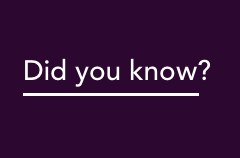The Australian Energy Market Operator (AEMO) has released its annual Gas Statement of Opportunities (GSOO) report, reinforcing the need for new investment in Australia’s central and east coast gas markets to address forecast supply shortfalls in the southern states1.
Developed with updated inputs from industry, the GSOO is one of AEMO’s gas planning and forecasting reports that provide technical insights to support investors and governments in making informed decisions to benefit consumers.
AEMO CEO Daniel Westerman said the report is consistent with previous calls for new investment in gas as supply from the gas fields in Bass Strait deplete. Production from the Longford Gas Plant, which has historically supplied two-thirds of the gas used in the East Coast Gas Market, will therefore reduce before retiring at the end of 2033.
“As the market and system operator, AEMO provides independent technical insights to inform policy and market-led investment,” Mr Westerman said.
“This year’s gas adequacy report again highlights the structural changes in the East Coast Gas Market, particularly that production is falling faster than demand in the southern states, reinforcing the need for investment in new gas supply,” he said.
In recent years, gas consumption has declined across most sectors, influenced by higher retail prices, mild winters, and increased electrification. This with changes in electricity generation outlooks has improved short-term gas availability. In the longer term, residential and commercial consumption is forecast to decline, while industrial consumption is expected to remain relatively stable.
The risk of peak-day shortfalls and seasonal supply gaps in the southern states is expected to arise from 2028, with annual supply gaps emerging from 2029, when production from existing, committed, and anticipated projects2 in the southern states is forecast to fall 32%, requiring new supply investments.
“Various industry-led solutions are being considered to address shortfall risks, beyond the advanced developments already included in the GSOO,” Mr Westerman said.
“Investment could include new production, storage, transportation, and liquefied natural gas (LNG) regasification terminals, or a combination of these solutions,” he said.
AEMO has assessed several potential future supply, storage, and transportation options to provide additional information on the impact each of these investments could have to delay forecast annual supply gaps and help mitigate the risk of peak-day shortfalls to varying degrees.
The 2025 GSOO reaffirms the critical role of gas-powered electricity generation in maintaining reliability and security as the power system transitions from coal to renewables, with electricity demand rising due to electrification.
“Flexible gas-powered generation will remain the ultimate backstop in a high-renewable power system,” Mr Westerman said.
“Gas, alongside batteries and pumped hydro, will enable higher renewable penetration and support reliability as coal-fired power stations retire.”
Alongside the GSOO, AEMO has also published the 2025 Victorian Gas Planning Report (VGPR), which provides a five-year assessment of Victoria’s gas supply and demand balance.
ENDS
1 New South Wales, the Australian Capital Territory, Victoria, South Australia, and Tasmania.
2 Gas production, pipelines, storage and LNG regasification terminals.






